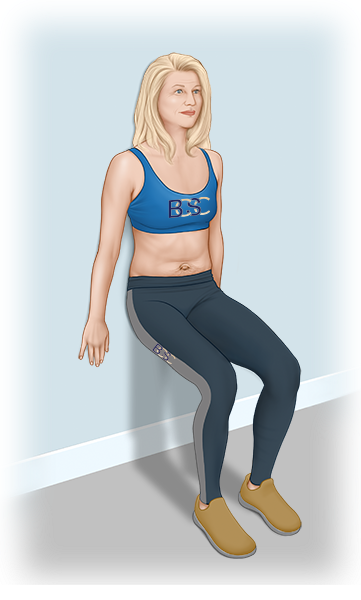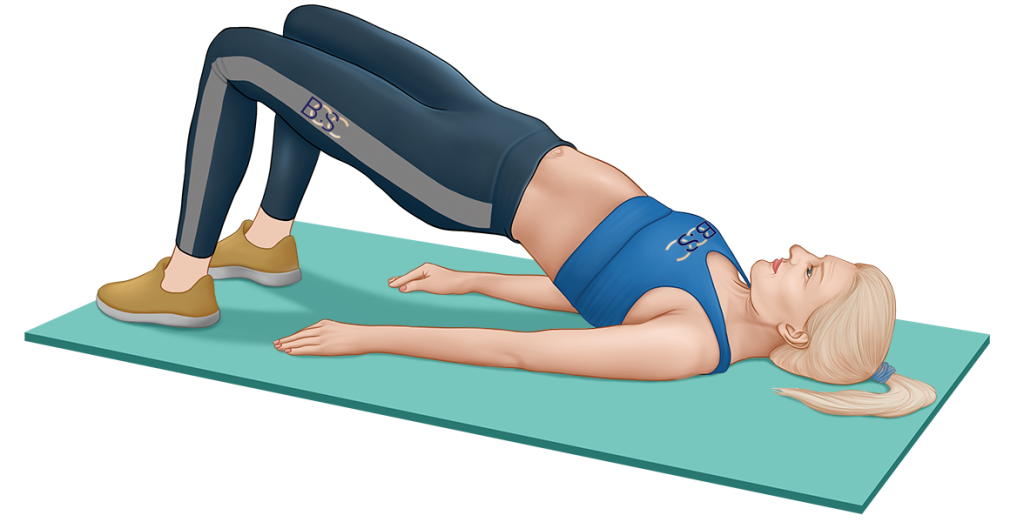15 Exercises Every Abdominoplasty Patient Must Know
Contrary to popular opinion, an abdominoplasty is not a shortcut to losing weight. I blame these unrealistic expectations on the colloquial use of the term “tummy tuck” to refer to an abdominoplasty. Because of this, far too many people think that an abdominoplasty will turn an overweight person into a slim one. But getting in shape isn’t a job you outsource to somebody else, even a specialist surgeon.
Achieving your goal weight and ideal body will take effort from your side. This means adopting a ** lifestyle and following a disciplined exercise programme.
Why Your Weight Matters Before an Abdominoplasty Surgery

To understand why exercise is so essential for abdominoplasty patients, let’s take a moment to fully understand what the surgery entails. An abdominoplasty is a plastic surgery that involves removing excess fat and skin from the abdomen while also repairing damage to the abdominal muscles. It’s a major procedure requiring you to take time off from work while you recover in the aftermath.
Major surgery like an abdominoplasty should never be taken lightly. In fact, the only thing that should be light when going in for surgery is your body weight! The surgery is less invasive when there is less excess fat and skin for the specialist surgeon to remove. This makes the outlook for your recovery more positive. This is also why surgeons recommend that patients going in for an abdominoplasty arrive for their surgery after they have lost most of their weight. An abdominoplasty is only meant to repair muscle damage, remove the last few stubborn fat deposits, and eliminate the loose skin that wouldn’t be possible through non-surgical methods.
Importance of Exercise for Abdominoplasty Patients
The best way to prepare for your abdominoplasty surgery is to start exercising months in advance. In the weeks immediately following the surgery, your level of physical activity will be severely curtailed. So it is much preferable to ingrain the habit of exercising before you are confined to your bed.
If you haven’t already begun following an exercise regimen, it’s best to start when there are still three to six months to go for your surgery. By preparing in advance, you ensure that you are closer to your goal weight on the day of the surgery, making the surgeon’s task **.
Even after your surgery, exercise remains important. As your recovery progresses, you can start increasing your level of physical activity (after getting your doctor’s approval, of course). This helps prevent you from regaining the weight you so pain stakingly dropped before the abdominoplasty. Even though you’ve just had major surgery, it doesn’t mean your physical activity should cease. In a study published in January 2022, 42 out of the 189 patients studied started and maintained their exercise programmes after surgery for the first time without experiencing complications.
Workout Waiting Period Post-Abdominoplasty
Even though exercising after an abdominoplasty is highly recommended, you shouldn’t be unrealistic with your expectations. Immediately after the surgery, you will be coming down from the anaesthesia, and your body will be recovering from the invasive procedure. It’s unlikely that you will be able to exercise on the day after the surgery, even if you want to. At this stage, it’s recommended you stay in the hospital for at least the first night after the abdominoplasty.
Once you are back home, being ** and well-rested is still your top priority. In the first few weeks after the abdominoplasty, you should only do light household chores like washing dishes. Avoid activities that strain your abdomen or tug on your stitches, like lifting heavy objects and bending over. If you feel up to it, you can try walking as a form of physical activity at this stage of your recovery.
After a couple of weeks, you can consult with your doctor about increasing your level of exercise. Once you are medically cleared, you can start incorporating exercises of increasing intensity into your regimen. A ** activity level also helps your recovery and can ** your sense of ** from the abdominoplasty.
Exercises to Get the Best Abdominoplasty Results
So, you’ve decided to get an abdominoplasty and found the right specialist surgeon for your needs. After the surgery, you will want to come up with an exercise plan in concert with your surgeon so that you can maximise its benefits. While every patient’s workout plan will look different, the recommended exercises generally fall under five main groups. In the rest of this article, we will look at each of those groups, as well as examples of exercises that fall into those groupings.

Stomach-Strengthening Exercises
Although abdominoplasties are often referred to as tummy tuck surgeries, any actual trimming of the tummy is achieved through that patient’s discipline rather than the surgeon’s scalpel. Since the main area of an abdominoplasty’s focus is the belly, it only makes sense that the exercise programme involves some stomach-strengthening exercises. Here are some common ones:
1. Dead Bugs: This exercise is excellent for strengthening your core as it reaches your deepest core muscle, the transversus abdominis. To perform this exercise, lie on your back and tighten your core. Raise your legs to hip height while holding them bent as if you are sitting in a chair. Then, slowly straighten one leg out and swing the arm on the same side backward. Continue repeating this motion on alternate sides until you complete a set. Remember to keep your core tight through the entire exercise!
2. Heel Slides: Another great exercise to build a strong core is heel slides. It ** your muscle strength while also increasing your flexibility. Heel slides help work out your pelvic muscles and hip flexors. To do heel slides, lie on your back with your knees bent and legs together. Slowly slide your heel along the floor until your leg is nearly straight, and then pull it back to its original position just as slowly. Repeat with the other leg, and continue until you’ve finished a set. Make sure your core is engaged while you perform this exercise.

3. Wall Sits: Anyone can sit in a chair. Only ** people can sit on a wall. Wall sits are a self-explanatory exercise that strengthens your core and leg muscles. They are performed by standing with your back to the wall. Slowly squat down to a sitting position while keeping your back pressed to the wall, and then rise back up the same way. Since this is another core exercise, make sure you engage your core muscles.

Diastasis Recti Exercises

One common reason for having an abdominoplasty surgery is torn abdominal muscles. This condition is called diastasis recti and frequently affects pregnant women, though any person could experience torn abdominal muscles. If you have an abdominoplasty to correct diastasis recti, it’s important to include special physiotherapy exercises designed for your abdominal muscles. Some examples of these exercises are:
4. Pelvic Tilt: This exercise is sometimes referred to as hip raises. It works out your lower back and core at the same time. This strengthening of your back and core provides better support to your rectis abdominis as they heal from the surgery. To perform pelvic tilts, lie on your back with your knees bent. Draw your heels as close to your bottom as you can in this position. Then, press down with your heels and raise your pelvis upwards. Hold for a moment at the top of the movement before slowly lowering your pelvis down again.

5. Kegel Exercises: One of the symptoms of diastasis recti is incontinence or a leaky bladder. This occurs due to a weak pelvic floor and muscles that cannot hold the sphincter closed. That’s why it’s recommended that you strengthen your pelvic floor after treating diastasis recti with an abdominoplasty. Luckily, the exercise to do so is so ** it can be performed anywhere without any equipment. Kegel exercises consist of simply clenching and unclenching your pelvic floor in a set of repetitions. You have to contract your pelvic muscles by tightening them as if you were holding back urine. Kegel exercises can be performed both standing and sitting.
Aerobic Exercises

If you want to lead a healthy lifestyle after getting an abdominoplasty surgery, you need to build your stamina and lung capacity. There’s nothing better than aerobic exercises for this purpose. Aerobic exercises help abdominoplasty patients keep the weight off after the surgery and release feel-good hormones like endorphins into their system- ** the mood and reducing stress levels. A list of approved aerobic exercises for abdominoplasty patients is as follows:
6. Running: When it comes to running after your abdominoplasty, remember the old saying, “You have to walk before you can run.” It holds true in this scenario as well. In the first few weeks, you will only be able to walk. It will take around six-to-eight weeks before your doctor will clear you for anything more intense than that. Once they do, you can graduate to light jogging and eventually start running.
7. Cycling: Some patients don’t enjoy running after an abdominoplasty as the impact hurts their surgery incision and damages their knees. Cycling (on a stationary workout bike) is the answer to their cardio woes. It takes the pressure off your knees and core while allowing you to work up a sweat.
8. Rowing: Another great aerobic alternative for abdominoplasty patients is the rowing machine. Whether at home or in the gym, a rowing machine allows you to get a good workout while remaining seated.
High-Intensity Interval Training (HIIT) Exercises

Following a HIIT regimen before your abdominoplasty is a reliable way to lose weight. HIIT involves short bursts of intense activity punctuated by short breaks in between. This pattern ** your metabolism, allowing you to lose weight faster than ** cardio or strength training. After you have fully recovered from surgery, you can start doing HIIT workouts again, starting with one or two sessions a week. Some of the exercises you will encounter in a HIIT programme include:
9. Burpees: Anyone who has experienced a military-style boot camp or attended a CrossFit class knows what burpees are. This gruelling exercise works out your whole body, from your arms to your legs. This also includes your core muscles, key to your abdominoplasty recovery.
10. Mountain Climbers: A deceptively ** exercise, mountain climbers involve balancing on your palms in a push-up position while alternately bringing up each knee to your chest. Keep your hips low to maximise the benefits for your core and pelvic muscles.
11. Butt Kickers: This exercise lets you build your stamina gradually and is quite ** to perform. Simply stand in one spot and begin running without moving forward. Every time you bring a leg up, try to touch your heel to your buttocks. This works out the quadricep muscles on your thigh and strengthens your legs.
Weight Training and Endurance Exercises

Strength training is useful in achieving muscle tone and definition all over your body. After an abdominoplasty, you will want the rest of your frame to be proportionate to your new contours, and strength training helps in that regard. Some common exercises are:
12. Squat Variations: There are many squat variations, with and without weights, that you can do to strengthen your legs.
13. Lunges: Another ** exercise that requires no equipment, lunges are a convenient way to train your leg muscles.
14. Bicep Curls: Don’t forget to pay attention to your upper body. All you need is a set of dumbbells to perform bicep curls, which will give you muscular and toned arms.
An abdominoplasty is simply the cherry on the cake of your new, ** figure. With discipline, dedication, and drive, you can find an exercise regimen that brings you closer to your **.
Reference
- Evangelos Keramidas, Stavroula Rodopoulou, Maria-Ioanna Gavala. 2022. “A Proposed Classification and Treatment Algorithm for Rectus Diastasis: A Prospective Study” Aesthetic Plastic Surgery, Vol 46


